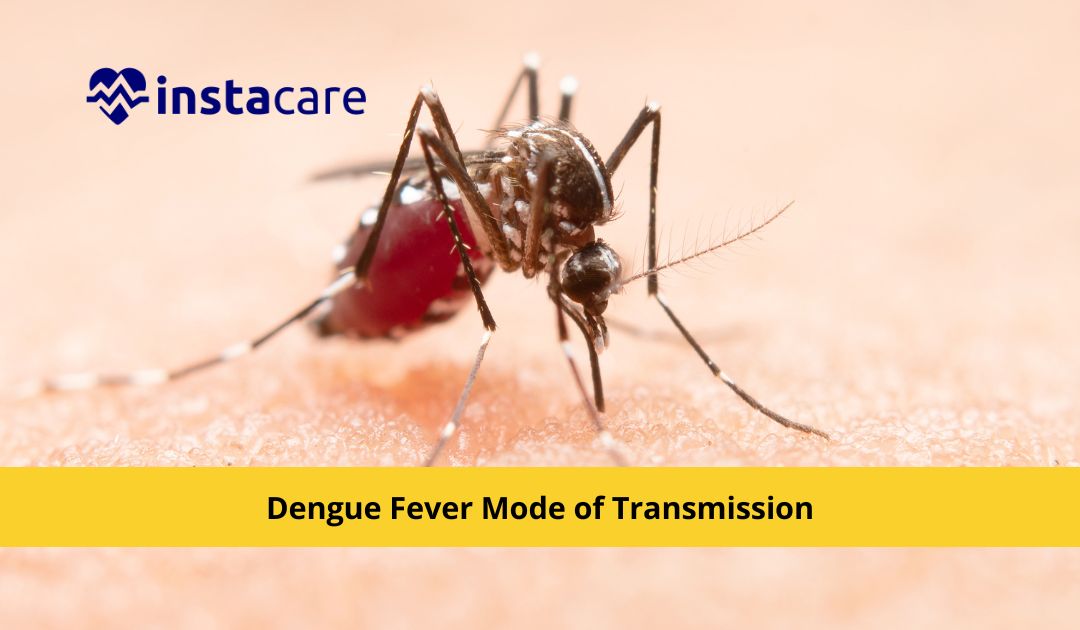Did you know dengue fever, a mosquito-borne illness that is
becoming increasingly prevalent around the world, has an estimated 390 million
infections per year? It's terrifyingly easy to contract and can lead to serious
complications if not treated properly. So what exactly is dengue fever and how
do you get it? In this blog post, we'll take a look at the mode of transmission
of this potentially fatal virus so that you can understand why prevention
measures are so important.
Here We can Discuss Different Modes of Transmission of Dengue!!
1- Through Mosquito Bites
Through mosquito bites, dengue fever can spread. This viral infection is a serious health issue in many parts of the world where mosquitoes are common carriers of the disease. Known for causing symptoms such as high fever, severe headache, and joint pain, dengue fever can be a debilitating illness. Mode of transmission is critical when it comes to understanding and preventing the spread of disease.
By being aware of how dengue fever is transmitted, individuals can take steps to protect themselves and others. It is essential to take measures to avoid mosquito bites, such as wearing protective clothing and using insect repellent when going outside. Awareness and prevention are key to keeping dengue fever at bay and reducing its impact on individuals and communities.
2- From Mother to Child
As a mother, passing on valuable lessons and insights to your children is a crucial part of your parenting journey. But when it comes to preventing and protecting your child from diseases like dengue, understanding the transmission cycle is just as important. Dengue transmission is a complex process that involves the bite of infected Aedes mosquitoes and subsequently, the transfer of the virus from mosquito to human.
As a mother, it is your responsibility to educate yourself
and your child on the different ways in which dengue can be spread, so that you
can take the necessary precautions and avoid exposing your child to potentially
fatal illnesses. Remember, there is nothing more important than the health and
safety of your child, and taking steps to prevent dengue transmission is just
one way you can do your part.
3- Through Infected Blood
Dengue fever is a viral disease that is transmitted to humans through the bite of infected mosquitoes. However, did you know that dengue can also spread through infected blood? Yes, a person can contract dengue if they receive a blood transfusion from an infected donor. This is why blood banks must screen donors thoroughly to prevent the transmission of this disease.
Despite this, the primary mode of dengue transmission remains the bite
of infected mosquitoes. The cycle of dengue transmission from mosquitoes to
humans and back to mosquitoes again is a complex process, and its prevention
requires collective effort.
4- Laboratory
The laboratory plays a pivotal role in understanding the spread of the Dengue virus. As one of the most lethal viruses transmitted by mosquitoes, we must develop swift and effective ways to detect and prevent its spread. By studying the virus in a laboratory environment, researchers can identify its unique characteristics and develop antiviral medicine and vaccines that could save countless lives.
Additionally, the laboratory can replicate
real-world scenarios and test the efficacy of different strategies in stopping
the spread of the virus. There's no denying the importance of laboratories in
combating the spread of devastating diseases like Dengue, and we must continue
to invest in research to protect public health.
5- Healthcare Setting Exposures
As healthcare professionals, we are often exposed to a variety of illnesses and diseases. One dangerous illness that we need to be aware of is dengue fever. Dengue fever is an acute mosquito-borne infection that can cause severe flu-like symptoms and, in some cases, lead to life-threatening complications. The mode of transmission for dengue is through the bite of infected Aedes mosquitoes.
Hence, it is important to be cautious of
our surroundings, especially in healthcare settings where the risk of exposure
is high, and take necessary precautions to prevent its spread. By being
vigilant and informed, we can not only protect ourselves but also our patients
from contracting this potentially deadly virus.
Conclusion
Therefore, it is essential to take all the necessary precautions to make sure that Dengue fever does not spread. Avoid staying in dengue-prone areas during peak epidemics and protect yourself from mosquito bites by using insect repellents and wearing long clothing if possible. Moreover, it is important to immediately seek medical advice if any symptoms of Dengue Fever appear. Taking preventive measures will ensure that we remain well-protected from this virus and its potentially fatal consequences. Let's work together towards a healthier world for all of us!

